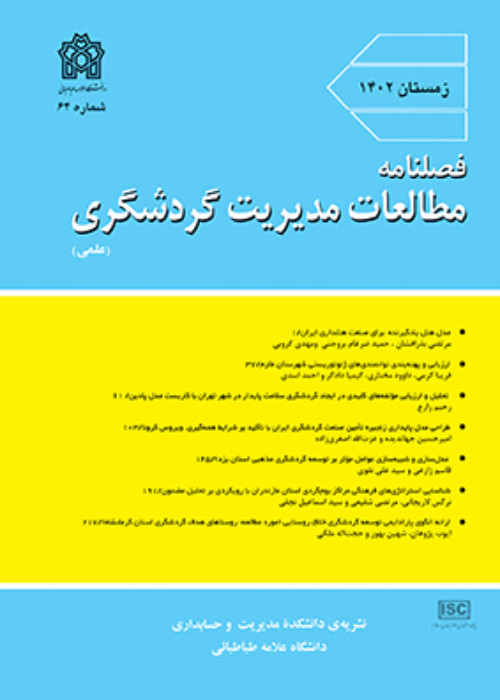Comparative analysis of spatial planning of tourist destinations developmentWith emphasis on rural areas
The experiences of past decades in countries around the world show that attention to the tourism sector is one of the most important economic and communication sectors of governments. Governments have implemented various policies to promote tourism and its sub-sectors at national, regional and local levels. The purpose of this study is a comparative analysis of Iranian Tourism Spatial Planning with Turkey, Serbia, and Portugal to use their experiences to reduce weaknesses and improve tourism development including rural tourism. This is fundamental research and the method used in this study is a comparative qualitative analysis based on the content analysis method. Library studies (documents) were used for data gathering. The research findings show that Turkey, Serbia, and Portugal succeed in spatial tourism planning by adapting programs and building convergence and partnerships between the spatial planning department at different national, regional and local (rural) levels. Tourism development has taken the lead - facilitating role, and taking strategic roles into account by empowering states in their legal plans and policies for tourism development. But at the national level, Iran is having problems because of the attitude and thinking of centralized planning and a partial attitude to the plans. At the regional level, there are problems such as lack of independence and the legal and political authority of regional managers in tourism programs. At the local level, there are problems (such as lack of legal authority to the local representative and lack of strategic participation) in the spatial planning of rural tourism destinations. One of the applications of this study is comparing the strength of the countries under study with Iran and then utilize all social resources, including human, economic and spatial and environmental resources. This approach helps to constitute a regional planning subdivision within a network of rural tourism destinations. And make vertical allocations in the field of tourism development to horizontal activities, which are an incentive for attracting tourists, managing and optimizing the implementation of the Rural Tourism Development Plan. On this basis, by orienting toward sustainable rural development, rural tourism can underpin regional development and form the indigenous and community-based tourism.
- حق عضویت دریافتی صرف حمایت از نشریات عضو و نگهداری، تکمیل و توسعه مگیران میشود.
- پرداخت حق اشتراک و دانلود مقالات اجازه بازنشر آن در سایر رسانههای چاپی و دیجیتال را به کاربر نمیدهد.




